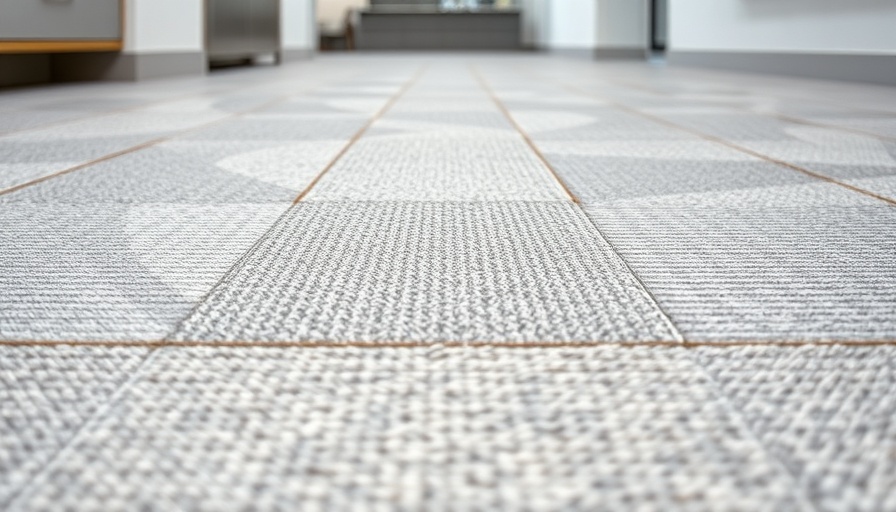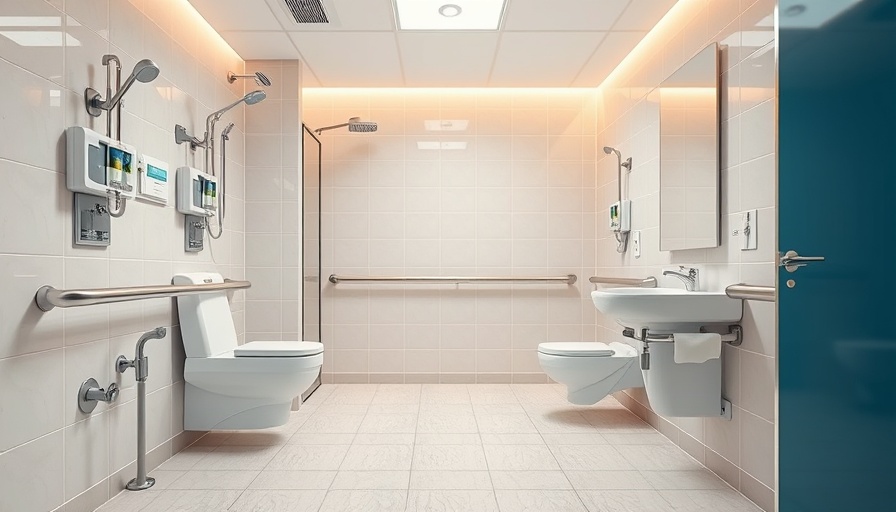
Understanding Non-Slip Flooring: A Safety Essential
When embarking on a bathroom renovation, one crucial factor often overshadowed by aesthetics is flooring safety. Non-slip flooring is not merely a stylish choice; it plays an essential role in maintaining safety, especially in wet environments like bathrooms. As we advance in creating comfortable and beautiful living spaces, prioritizing safety while we tile and design becomes increasingly vital.
With homes housing children and elderly residents, the importance of a safe bathroom cannot be overstated. Statistically, slips and falls are among the leading causes of injuries in households, making the choice of flooring a key aspect of your renovation project. Understanding the various materials available, along with their corresponding texture and maintenance needs, allows you to make an informed choice that balances both beauty and security.
Diving into Material Options for Non-Slip Flooring
The market is abundant with options when it comes to non-slip flooring. Common choices include ceramic tiles, vinyl planks, and natural stone. Each has its own set of advantages that can enhance your space while providing critical safety:
- Ceramic Tiles: Known for their durability and moisture resistance, textured ceramic tiles provide excellent traction ideal for bathrooms. They hold their aesthetic appeal over time and are easier to maintain than other flooring options.
- Vinyl Flooring: Gaining popularity in modern renovations, vinyl offers affordability, comfort, and various style options. Many contemporary vinyl products include slip-resistant surfaces, ensuring safety without skimping on fashion.
- Naturally Stunning Stone: While natural stone, like marble or slate, adds a touch of elegance, it can be smooth and more prone to slippery conditions. However, opting for textured finishes can improve traction significantly.
Texture & Finish: Key Factors in Ensuring Safety
The texture and finish you choose play a pivotal role in the slip resistance of your flooring. A textured surface naturally creates friction, reducing the risk of falling even when moisture is present. Therefore, consider materials with a high coefficient of friction (COF) as they indicate better slip resistance.
Another aspect to consider is the finish. Matte finishes tend to outperform glossy ones in terms of slip resistance. While shiny surfaces are oftentimes visually striking, they can become dangerously slick when wet. Prioritizing matte or honed finishes for maximum safety without sacrificing aesthetics is crucial.
The Importance of Finding Comfort
While safety is paramount, it’s essential to remember the comfort factor. Rough textures may provide incredible traction, but they can also be uncomfortable underfoot, especially for those who regularly walk barefoot in the bathroom. Striking a balance between comfort and safety should be a primary goal when selecting your flooring to ensure a pleasant experience for everyone in the household.
Creative Design Considerations for Non-Slip Floors
The best part about non-slip flooring is that it doesn't necessitate a design compromise. The market today offers a multitude of stylish options that also adhere to safety requirements, allowing you to rejuvenate your bathroom without sacrificing your aesthetic vision.
For those reinventing their space, look for innovative designs in tiles and planks that reflect current trends yet meet safety standards. This could be a trendy hexagon tile, vibrant patterns, or wood-like vinyl planks that can bring warmth into your bathroom, enhancing both the look and safety of your space.
Why Your Choice Matters: Safety, Style, and Functionality
Investing in the right non-slip flooring for your bathroom isn't just about avoiding mishaps; it's about making a benchmark decision that caters to safety, style, and functionality. It can influence the overall ambiance of your bathroom while adding a layer of protection for its users.
Finishing Thoughts
As you embark on your bathroom renovation journey, keep in mind the importance of non-slip flooring in crafting a safe and stylish haven. By understanding material choices, textures, and finishes, you can create a beautiful bathroom that is as safe as it is stunning.
Take the first step in making an informed decision for your bathroom renovation today! Your family's safety is paramount, and a well-planned flooring choice can enhance your space dramatically.
 Add Row
Add Row  Add
Add 




Write A Comment